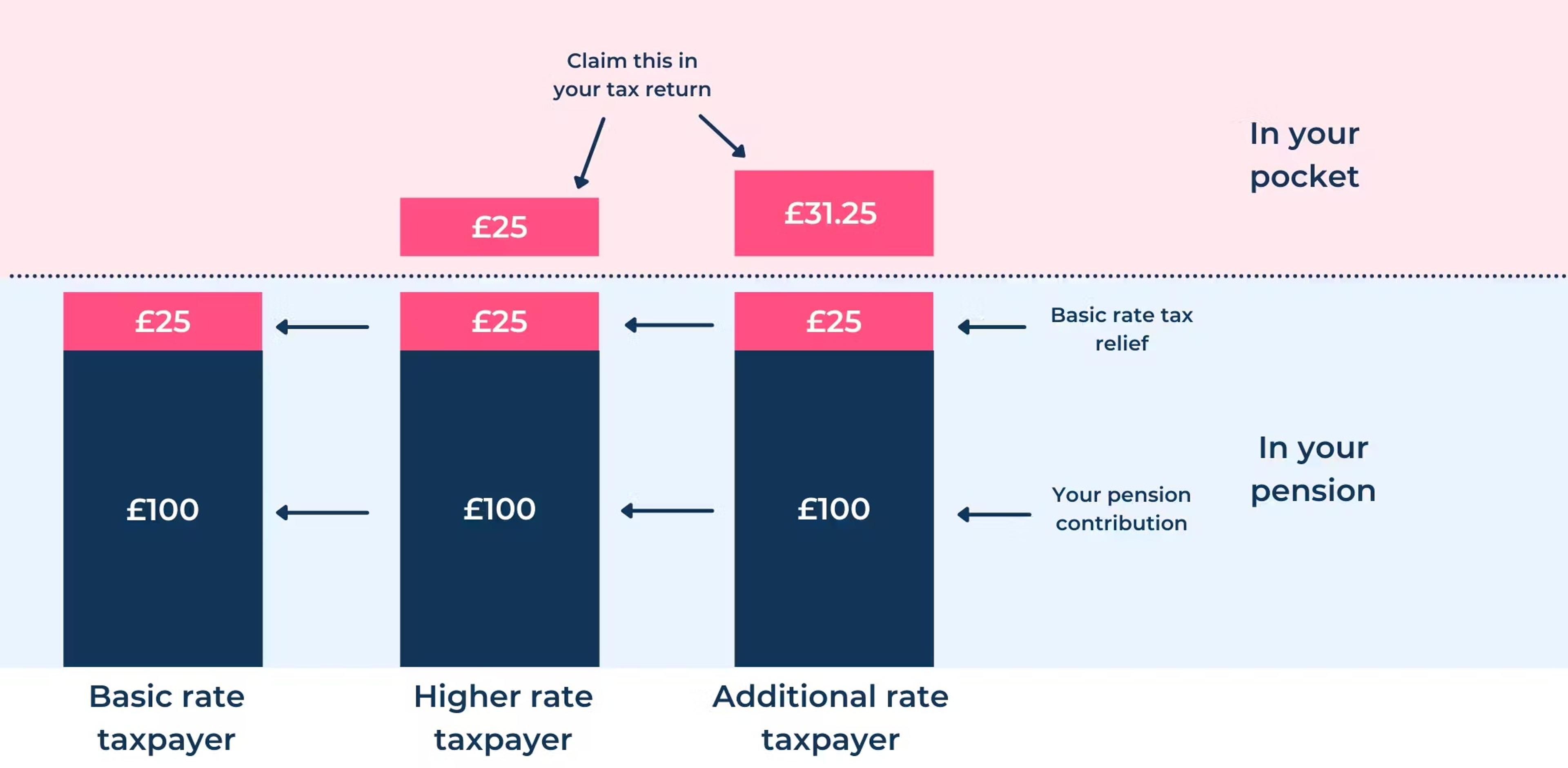Maximising the Tax Year: Essential Guide for the Self-Employed
- By
- Murray Humphrey

If we’ve learnt anything this last year, it's to expect the unexpected! It’s never been more important to plan for the future and make sure your money is working as hard as you do. Whilst the government offered support packages to help the self-employed throughout coronavirus, many fell through the cracks due to eligibility criteria. On the other hand, many self-employed people may have saved on outgoings this year, and have built up savings that could now mean they have to pay more tax on their profits.
Regardless of your unique position, the end of the tax year is a great financial opportunity for all self-employed people to review their income and take full advantage of the government relief and benefits available. Reviewing your outgoings is also a form of future proofing, by helping yourself out when it comes to your tax bill next year.
Pension contributions provide huge tax relief – make the most of your allowance
For any personal pension contribution, the government adds a 25% tax top-up to your contributions. Your annual allowance, or the maximum amount you can pay into your pension each year is up to £40,000, or your annual earnings (whichever is lower).
Topping up your pension contributions to make the most of your annual allowance is one of the most effective ways of getting the tax back that you’ve already paid on that contribution.
If your outgoings over this last year have been lower than you expected, could you boost these cost savings even further by getting your money working harder for you? By contributing into your pension you’ll get an extra £25 for every £100 you pay in, as well as benefiting from the extra potential growth on your pension pot.
Please remember, tax treatment does depend on your individual circumstances & may be subject to change in the future.
Higher rate taxpayer? Claim back 25% extra of tax relief!
If you’re a higher rate taxpayer, not only do you get the 25% tax top-up from the government into your pension, but you can also claim an extra 25% tax back in your tax return. So, for every £100 you’ll get the £25 top up in your pension and you can also claim a further £25 (£31.25 if you’re an additional rate payer) in your self-assessment tax return.
So, if you contribute into your pension before 5 April, from 6 April onwards you can submit your next tax return and claim back the extra 25% tax relief. HMRC will either send this to you in a cheque in the post, or take it off your total tax bill.
In short, as a higher rate taxpayer by contributing £100 into your pension, you’ll be getting £50 back from the government.
You can see here how much tax relief you can get back in your pension and in your pocket, from a £100 pension contribution depending on your taxpayer bracket.

If you complete your tax return at the beginning of the new financial year, not only will you receive this tax relief in your pocket, but imagine how happy you’ll be with yourself next January knowing you’d already finished and filed your paperwork!
If you’re earning over certain limits, there may be other benefits to taking a look at how much you’ve saved into your pension this year, and working out if you could be better off by paying an extra amount in now:
Other ways your pension can help you out
Chances are, you’ve not considered that your pension could be a nifty way to help balance your personal finances and make sure you’re receiving the allowances and benefits you’re entitled to. Using your pension to save for the future, and improve your income right now feels too good to be true, but it's not! Here are a few ways your pension might be able to help, if you earn over certain limits:
Get your personal allowance back
If you’re earning over £100,000 you’ve probably experienced a cut to your personal allowance. Most people have a tax-free amount they can earn before income tax is applied which is called the personal allowance. For 2020/21 tax year this is £12,500. Once you earn more than £100,000 your personal allowance starts to take a hit. It’s reduced by £1 for every £2 you earn. You lose it completely once you earn £125,000.
You might be able to recover some or all of your personal allowance by increasing your pension contributions to reduce what is seen as earned income. You save on tax, and benefit from more in your pension pot for retirement.
Get your child benefit back and boost your pension savings
If you’re eligible for Child benefit, this starts to reduce when your earnings reach £50,000 due to something called the Child Benefit Tax Charge. Once you hit £60,000, the tax charge cancels out the benefit completely.
However, making a payment into your pension reduces what is considered income and could mean you could keep some or all of your child benefit entitlement, whilst increasing your savings for retirement. You can use the government’s child benefit calculator to work out the impact of the charge.
(It’s useful to remember that you can choose not to receive child benefit if your earnings are over £60,000, but you should still consider filling in the child benefit claim form. Having a claim registered helps with earning National Insurance credits and your eligibility for the state pension.)
Future proof your finances
With the end of the tax year approaching, you’re probably just getting over the trauma of getting your self-assessment tax return submitted on time, but it’s worth keeping in mind the things you can do now to help when it’s time to balance the books next year.
If your 2020/21 tax year outgoings were lower than expected and you’ve built up a savings pot, adding it to your pension could be a way of reducing the tax you will pay on your profits.
Handily, paying more into your pension before the end of this tax year could also help build a solid foundation for your income later in life and guard against any more turbulent times in the years to come.

Murray Humphrey
Penfold